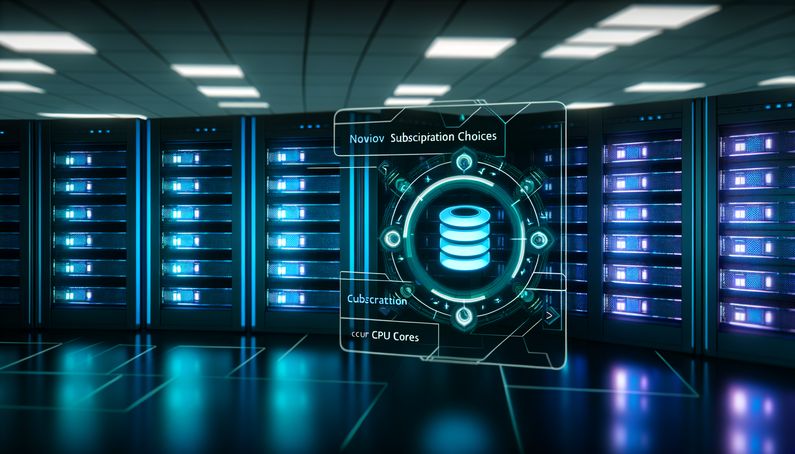
Microsoft's Subscription Model for Windows Server Hotpatching: A New Era in Server Management
Microsoft’s decision to require a subscription for Windows Server hotpatching marks a pivotal shift in how businesses manage server updates. This new model, priced at $1.50 per CPU core per month, offers scalability for diverse server infrastructures, allowing companies to tailor their subscriptions to their specific needs (Bleeping Computer). As the preview period ends on June 30, 2025, users will transition to a paid service unless they opt out, a move that has sparked discussions about cost and value (Born’s Tech and Windows World). This change is not just about pricing; it integrates with Azure Arc, enhancing management capabilities across hybrid environments (Bleeping Computer).
Subscription Pricing Structure
The new subscription model for Windows Server hotpatching introduces a pricing structure that is based on the number of CPU cores. Microsoft has set the subscription fee at $1.50 per CPU core per month (Bleeping Computer). This pricing model aims to provide flexibility for businesses of various sizes, allowing them to scale their subscription according to their server infrastructure needs.
For example, a server with a single AMD EPYC 9554 processor, which contains 64 cores, would incur a monthly cost of $96 (64 cores × $1.50). In the case of a dual-socket server equipped with two such processors, the monthly fee would double to $192 (Security Online). This cost structure is designed to accommodate different server configurations, ensuring that enterprises can manage their expenses effectively by subscribing only for critical servers rather than across their entire infrastructure.
Transition from Preview to Paid Service
The transition from the preview phase to a paid subscription model is a significant shift for users who have been testing the hotpatching feature. Microsoft has allowed users to try hotpatching for Windows Server 2025 free of charge during the preview period, which began in September 2024 (Heise Online). However, this preview period is set to end on June 30, 2025, after which users will be automatically enrolled in the paid subscription unless they opt out before this date (Born’s Tech and Windows World).
This automatic transition has raised concerns among some users, as it mirrors previous instances where Microsoft has transitioned free services to paid models, such as detailed logs (Techzine Global). Users who do not wish to continue with the service must disenroll by the specified date to avoid being charged.
Integration with Azure Arc
To utilize the hotpatching feature, servers must be connected to Azure Arc, a service that extends Azure management capabilities to on-premises and multi-cloud environments. This integration allows administrators to manage their Windows Server 2025 machines through the Azure Portal, where they can enable hotpatching by selecting the appropriate option in the Azure Update Manager (Bleeping Computer).
Azure Arc provides a unified management experience, enabling users to apply hotpatches across different environments without the need for server reboots. This capability is particularly beneficial for businesses that operate in hybrid cloud environments, as it streamlines the update process and reduces downtime.
Impact on IT Operations
The introduction of a subscription model for hotpatching is expected to have a significant impact on IT operations. By allowing security updates to be applied without requiring a system reboot, hotpatching minimizes downtime and enhances system availability, which is a critical concern for IT administrators (Maombi.com).
However, the associated costs of the subscription model may lead businesses to prioritize hotpatching for their most critical servers. Companies with large server infrastructures may find the costs prohibitive if they choose to apply hotpatching across all their servers. As a result, IT departments may need to carefully evaluate their server environments to determine which systems would benefit most from the hotpatching service.
Security and Compliance Considerations
While hotpatching offers the advantage of reducing system reboots, there are instances where a restart will still be necessary for security reasons. Microsoft has indicated that certain updates, such as non-Windows updates and Windows non-security updates, cannot be applied without a restart (Bleeping Computer). This limitation means that IT administrators must continue to plan for occasional reboots to maintain system security and compliance.
The subscription model also raises questions about the overall security posture of systems that do not utilize hotpatching. By making hotpatching a paid feature, Microsoft may inadvertently create a disparity in security levels between organizations that can afford the service and those that cannot. This concern is particularly relevant for smaller businesses or those with limited IT budgets, as they may be unable to take full advantage of the hotpatching capabilities (Techzine Global).
In conclusion, the new subscription model for Windows Server hotpatching introduces both opportunities and challenges for businesses. While it offers the potential to reduce downtime and enhance system availability, the associated costs and integration requirements may necessitate careful planning and prioritization by IT departments.
Final Thoughts
The introduction of a subscription model for Windows Server hotpatching presents both opportunities and challenges. While it promises reduced downtime and improved system availability, the associated costs may lead businesses to prioritize which servers receive updates (Maombi.com). The integration with Azure Arc offers a seamless management experience, yet the necessity for occasional reboots for certain updates remains a consideration (Bleeping Computer). As organizations navigate these changes, the balance between cost, security, and operational efficiency will be crucial.
References
- Bleeping Computer. (2025). Microsoft: Windows Server hotpatching to require subscription. https://www.bleepingcomputer.com/news/microsoft/microsoft-windows-server-hotpatching-to-require-subscription/
- Security Online. (2025). Windows Server 2025 hotpatching rolls out July 1st, requires subscription. https://securityonline.info/windows-server-2025-hotpatching-rolls-out-july-1st-requires-subscription/
- Heise Online. (2025). Microsoft hotpatching for Windows Server 2025 costs extra. https://www.heise.de/en/news/Microsoft-Hotpatching-for-Windows-Server-2025-costs-extra-10365332.html
- Born’s Tech and Windows World. (2025). Windows Server 2025 hotpatching need a subscription from July 1, 2025. https://borncity.com/win/2025/04/29/windows-server-2025-hotpatching-need-a-subscription-from-july-1-2025/
- Techzine Global. (2025). Microsoft makes hot-patching a paid feature for Windows Server 2025. https://www.techzine.eu/news/security/130888/microsoft-makes-hot-patching-a-paid-feature-for-windows-server-2025/
- Maombi.com. (2025). Windows Server 2025 hotpatching. https://maombi.com/en/platform-desktop/os-windows/pages/windowsserver2025-5j40l-3688/



